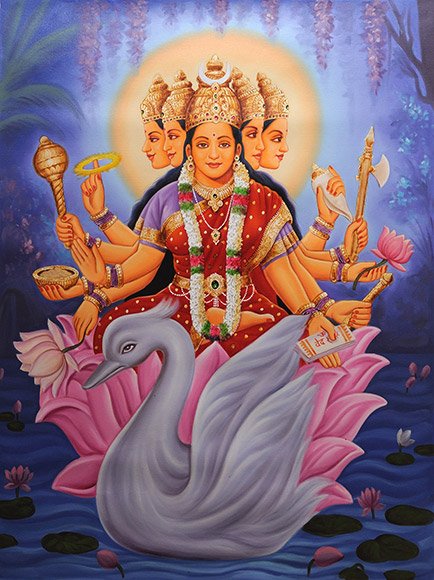Kusumavicitra, Kusumavicitrā, Kusuma-vicitra, Kusumavi-citra: 5 definitions
Introduction:
Kusumavicitra means something in Hinduism, Sanskrit. If you want to know the exact meaning, history, etymology or English translation of this term then check out the descriptions on this page. Add your comment or reference to a book if you want to contribute to this summary article.
Alternative spellings of this word include Kusumavichitra.
In Hinduism
Chandas (prosody, study of Sanskrit metres)
Source: Shodhganga: a concise history of Sanskrit Chanda literature1) Kusumavicitrā (कुसुमविचित्रा) is the alternative name of a Sanskrit metre (chandas) mentioned by Hemacandra (1088-1173 C.E.) in his auto-commentary on the second chapter of the Chandonuśāsana. Kusumavicitrā corresponds to Madanavikārā, Gajalulita. Hemacandra gives these alternative names for the metres by other authorities (like Bharata), even though the number of gaṇas or letters do not differ.
2) Kusumavicitrā (कुसुमविचित्रा) refers to one of the 135 metres (chandas) mentioned by Nañjuṇḍa (1794-1868 C.E.) in his Vṛttaratnāvalī. Nañjuṇḍa was a poet of both Kannada and Sanskrit literature flourished in the court of the famous Kṛṣṇarāja Woḍeyar of Mysore. He introduces the names of these metres (e.g., Kusumavicitrā) in 20 verses.
3) Kusumavicitrā (कुसुमविचित्रा) refers to one of the 130 varṇavṛttas (syllabo-quantitative verse) dealt with in the second chapter of the Vṛttamuktāvalī, ascribed to Durgādatta (19th century), author of eight Sanskrit work and patronised by Hindupati: an ancient king of the Bundela tribe (presently Bundelkhand of Uttar Pradesh). A Varṇavṛtta (e.g., kusumavi-citrā) refers to a type of classical Sanskrit metre depending on syllable count where the light-heavy patterns are fixed.
4) Kusumavicitrā (कुसुमविचित्रा) refers to one of the seventy-two sama-varṇavṛtta (regular syllabo-quantitative verse) mentioned in the 334th chapter of the Agnipurāṇa. The Agnipurāṇa deals with various subjects viz. literature, poetics, grammar, architecture in its 383 chapters and deals with the entire science of prosody (e.g., the kusuma-vicitrā metre) in 8 chapters (328-335) in 101 verses in total.

Chandas (छन्दस्) refers to Sanskrit prosody and represents one of the six Vedangas (auxiliary disciplines belonging to the study of the Vedas). The science of prosody (chandas-shastra) focusses on the study of the poetic meters such as the commonly known twenty-six metres mentioned by Pingalas.
Languages of India and abroad
Sanskrit dictionary
Source: Cologne Digital Sanskrit Dictionaries: Monier-Williams Sanskrit-English Dictionary1) Kusumavicitra (कुसुमविचित्र):—[=kusuma-vicitra] [from kusuma] mf(ā)n. having various flowers
2) Kusumavicitrā (कुसुमविचित्रा):—[=kusuma-vicitrā] [from kusuma-vicitra > kusuma] f. Name of a metre consisting of four lines of twelve syllables each.
[Sanskrit to German]
Sanskrit, also spelled संस्कृतम् (saṃskṛtam), is an ancient language of India commonly seen as the grandmother of the Indo-European language family (even English!). Closely allied with Prakrit and Pali, Sanskrit is more exhaustive in both grammar and terms and has the most extensive collection of literature in the world, greatly surpassing its sister-languages Greek and Latin.
Kannada-English dictionary
Source: Alar: Kannada-English corpusKusumavicitra (ಕುಸುಮವಿಚಿತ್ರ):—[noun] (pros.) a meter.
Kannada is a Dravidian language (as opposed to the Indo-European language family) mainly spoken in the southwestern region of India.
See also (Relevant definitions)
Partial matches: Citra, Kusuma, Vicitra.
Full-text: Madanavikara, Gajalulita.
Relevant text
Search found 1 books and stories containing Kusumavicitra, Kusuma-vicitra, Kusuma-vicitrā, Kusumavi-citra, Kusumavi-citrā, Kusumavicitrā; (plurals include: Kusumavicitras, vicitras, vicitrās, citras, citrās, Kusumavicitrās). You can also click to the full overview containing English textual excerpts. Below are direct links for the most relevant articles: